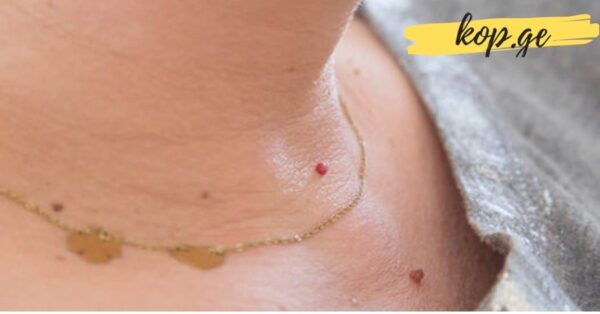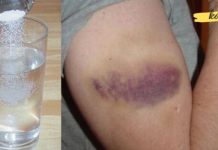What Do Red Spots on the Body Tell Us? Here’s What You Need to Know

Have you noticed small red spots or moles suddenly appearing on your skin? While they might seem harmless at first, these red marks—commonly known as angiomas—can sometimes reveal valuable information about your health. Understanding what causes these red spots and when to take them seriously can help you maintain better awareness of your overall well-being.
🔴 What Are Red Moles (Angiomas)?
Red moles, medically referred to as angiomas, are vascular neoplasms—benign growths made up of small blood or lymphatic vessels. They can range in size from a few millimeters to several centimeters in diameter. Angiomas are typically bright red due to their blood vessel content and can appear anywhere on the body.
There are two types:
Congenital angiomas – present at birth due to developmental factors during pregnancy.
Acquired angiomas – that appear later in life due to various internal or external influences.
📍 Where Can Red Spots Appear on the Body?
These spots can appear literally anywhere, including:
The abdomen, arms, legs, back, chest, face, and neck
In some cases, they may even form on internal organs
Depending on their shape and structure, angiomas are classified as:
Punctate (dot-like)
Cavernous (deep, spongy)
Stellate (star-shaped)
❓ Why Do Red Spots Appear?
Angiomas are formed due to a proliferation of small blood vessels (hemangiomas) or lymphatic vessels (lymphangiomas). Several factors can trigger their appearance:
Most common causes include:
Hormonal fluctuations, especially in women (e.g., during pregnancy or menopause)
Genetic predisposition or hereditary factors
Skin trauma such as cuts, bruises, or abrasions
Prolonged sun exposure or frequent use of tanning beds
Diseases of the liver, pancreas, or gastrointestinal tract
Nutrient deficiencies, particularly low levels of:
Iodine
Magnesium
Chromium
Vitamins C and K
Elevated estrogen or insulin levels, which can influence vascular changes
Liver dysfunction, which plays a central role in blood filtration and detoxification
While some red moles are completely harmless, their presence—especially in larger numbers or with unusual features—may warrant further examination.
🩺 What Should You Do If You Notice Red Spots on Your Body?
If you suddenly notice a large number of red moles that are growing in size, or if an existing red spot has become injured, painful, or itchy, it is crucial to consult a dermatologist. Early diagnosis can help rule out underlying issues and prevent potential complications.
Typical Diagnostic Methods:
Visual examination and palpation (feeling the mole) are often sufficient for moles on the skin’s surface.
If red spots are suspected to be located in internal organs, further tests may be needed:
X-rays for skeletal angiomas (spine, ribs, pelvis, skull)
Angiography – a special X-ray using contrast dye to detect vascular abnormalities in the lungs, kidneys, brain, and other organs
Ultrasound scans to analyze the structure, depth, and location of angiomas
Following a proper diagnosis, your doctor will decide if treatment is necessary. The main medical indication for removal is rapid growth of the mole or risk of malignant transformation (though rare).
⚠️ Are Red Moles Dangerous?
In general, angiomas are benign, meaning they are non-cancerous and usually harmless. Unlike melanomas (a type of skin cancer), angiomas do not pose a direct threat to your life. Isolated red spots that do not grow or cause any symptoms typically do not require medical treatment and are considered safe.
However, certain scenarios may lead to complications:
Red moles can become problematic when:
The mole begins to grow rapidly
It is in an area prone to injury or friction
Multiple red moles appear suddenly
There is a possibility of malignant transformation, though this is rare
Internal angiomas may also lead to secondary symptoms, depending on their location:
Shortness of breath
Epileptic seizures
Vision or hearing impairment
These symptoms are typically associated with large or strategically placed angiomas that affect surrounding tissues or nerves.
🛡️ Preventing the Appearance of Red Moles
While you cannot prevent congenital angiomas (those that appear at birth), many acquired angiomas can be minimized or prevented through simple lifestyle adjustments.
For prevention after birth, consider the following:
Avoid excessive sun exposure and reduce the use of tanning beds
Maintain a balanced diet rich in essential vitamins and minerals
Stay hydrated and support liver health
Get enough sleep and manage stress
Exercise regularly to improve circulation
Avoid unnecessary skin trauma
In children, red moles that appear in infancy are often temporary and may disappear by the time they’re 5 to 7 years old. Unless the child complains of itching, pain, or discomfort, there is usually no cause for concern.
👩⚕️ Final Thoughts
If you notice red spots on your body, don’t panic, but do pay attention to any changes. Track whether the spots increase in size, become raised, bleed, or cause pain. At the first sign of irritation, trauma, or rapid growth, consult a dermatologist to rule out any complications.
Early consultation can help detect potential problems and allow timely treatment, if necessary. In most cases, red spots are harmless, but your skin often reflects your internal health—so it’s always better to listen to what it might be telling you.












